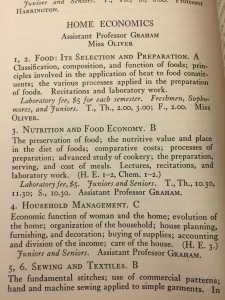
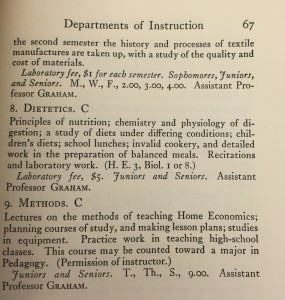
These are the home economics course descriptions in the Middlebury course catalogue from the 1917-1918 school year. This was the same year that Bessie Jennings completed her Household Management project. The Household Management course focused on the role of the woman in the home, and the different areas that women were expected to control. Sewing and Textiles not only taught students the basics of sewing and stitching, but also the history of textile manufacturing. There was also a course called Methods, which was directed towards aspiring teachers of home economics. The subject of food, though, is clearly the most prevalent topic of study. However, there is more to these classes than simply the preparation of food, as one stereotypically associates with home economics courses. Although food preparation is indeed taught, these courses have a more holistic approach by emphasizing the importance of nutrition, different diets, and digestive systems. In all of these courses there is a blend between pure skill-training and teaching the broader concepts of the subject.
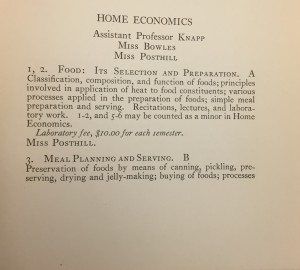
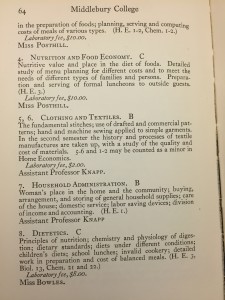
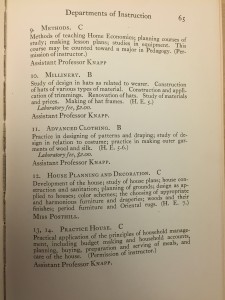
The course descriptions shown here are from the 1925-1926 Middlebury course catalogue. Since 1917, Middlebury added four courses in the home economics field. The new courses were Millinery, Advanced Clothing, House Planning and Decoration, and Practice House. The additions of the first two, Millinery and Advanced Clothing, show how clothing was becoming a more prominent part of home economics classes. House Planning and Decoration and the Practice House courses appear to be extensions of the Household Management course from 1917. Again, there seems to be a balance between pure vocational training and a more wholesome learning experience for women.
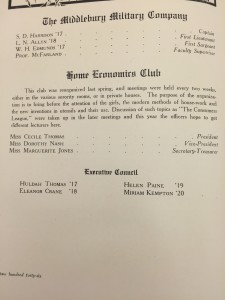
This page from the yearbook of 1917 shows the description of the Home Economics Club, and includes the names of the people who hold the most important positions in the club. The description states that the main focus of the club is to “bring before the attention of the girls, the modern methods of house-work and the new inventions in utensils and their use.” Even though Bessie Jennings’ name does not appear on this page, other sources stated that Bessie was actively involved in the Home Economics Club, which we would expect from someone who graduated with honors in Home Economics. The Middlebury Campus of November 21, 1917, wrote that at the first meeting of the year the Home Economics Club appointed Bessie Jennings as the new chairman of the executive committee. In addition, a new president, vice-president, and secretary-treasurer were named.
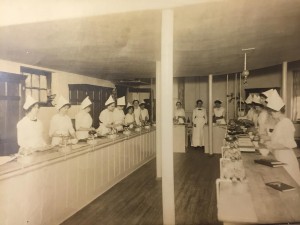
Above is a picture of a home economics class at Middlebury College taken in the 1920’s. Women are seen preparing food, most likely studying the area of Middlebury’s home economics curriculum entitled Food: It’s Selection and Preparation.
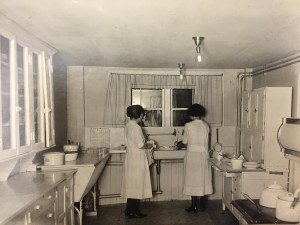
Above, two students are pictured in Middlebury College’s home economics “practice house,” where students studying home economics could apply the principles they had learned to real life situations. These principles include household management, planning, buying, preparation of food, and household care.